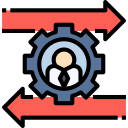Learn How to Learn, Efficiently
Break topics into tiny, testable chunks. Use spaced repetition to revisit concepts before they fade. Ten focused minutes daily compounds faster than weekend cramming, especially when paired with quick quizzes and flashcards to expose gaps.
Learn How to Learn, Efficiently
Practice deliberately: define a narrow skill, set a stretch goal, and seek fast feedback. A mentor, peer group, or online community can review your work, helping you escape plateaus and reinforce accurate, transferable patterns.



